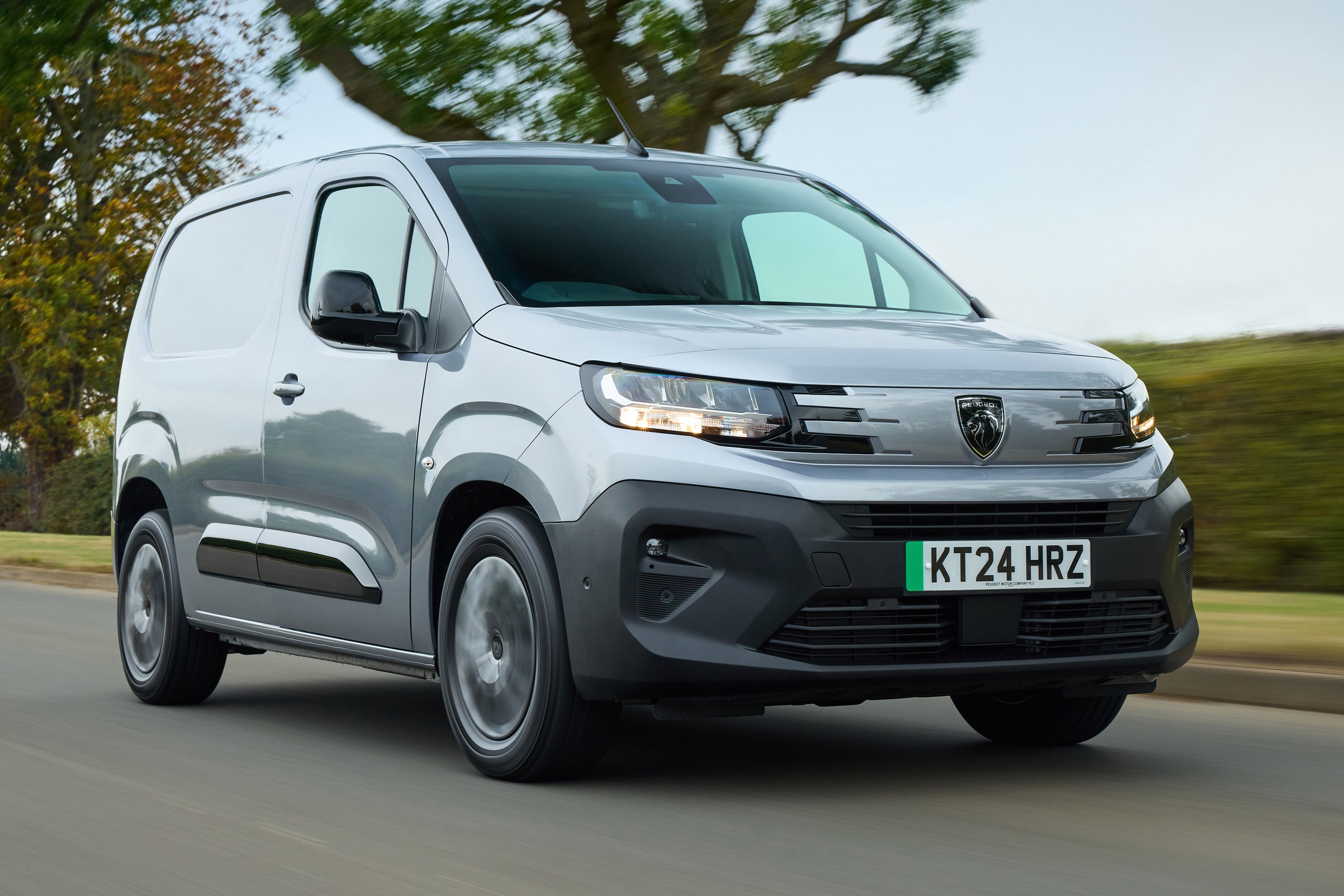Peugeot Partner Van Review 2025: Price, specs & load capacity
Written by Ivan Aistrop
Quick overview
Pros
- Figures for load volume and payload are impressive
- A few handy practicality touches
- Easy to drive, and comfortable enough
Cons
- Small steering wheel won’t suit all shapes and sizes of drivers
- Mid-spec vans are expensive
- Very basic entry level model
Overall verdict on the Peugeot Partner
"The Peugeot Partner is a popular small van from the French firm, but does it really deserve to be so popular? Find out in our Peugeot Partner review."
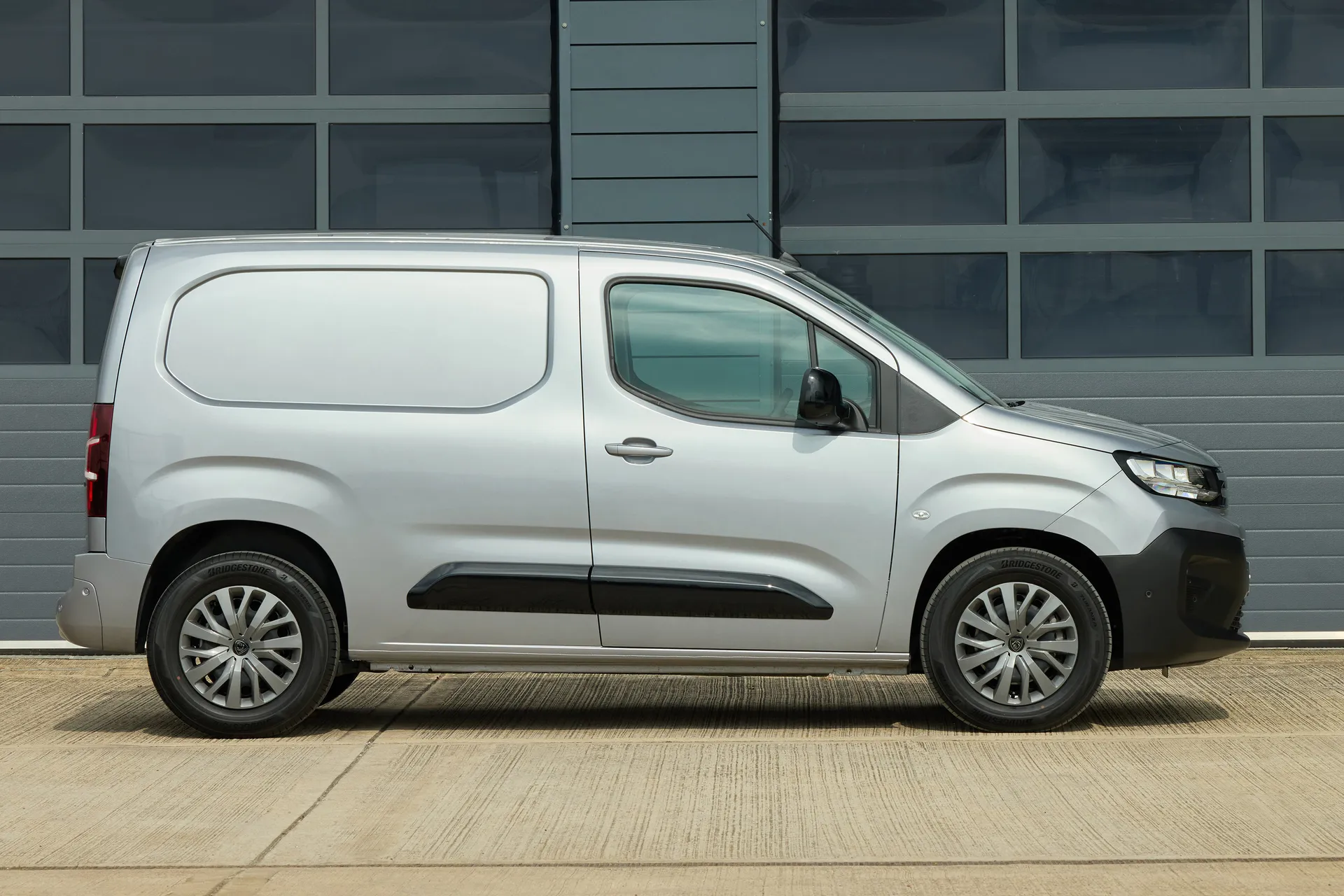
It’s an interesting fact that the Peugeot Partner has indeed always had a partner. Ever since the first-generation model was launched way back in 1996, it’s shared its mechanicals and tech with another small van from within the same group of companies, the Citroen Berlingo. And both have proved very popular over the years.
Since then, however, that group of companies we were just talking about has grown. In 2017, the PSA Group which owned both brands also acquired Vauxhall, and then in 2021, PSA merged with the FCA group (who owned Fiat, Alfa Romeo, Jeep, and others) to form a massive multi-brand manufacturing monster known as Stellantis. And as such, the underpinnings of the Partner and Berlingo now also form the basis of more compact van offerings from the group, including the Fiat Doblo and the Vauxhall Combo.
So what marks the Partner out from its stablemates? Well, not much, really. All four models are mechanically identical, so they all deliver the same driving experience, the same level of space and practicality, and pretty much the same tech. There are slight differences in styling, equipment levels and pricing, but these are very much of the blink-and-you-miss-them variety.
So what marks the Partner out from the various other compact vans that it has to compete with? Well, its official figures for payload and load capacity are among the best-in-class, so it does well there. It’s well made and reasonably affordable, too. However, some rivals are better to drive, while others are nicer inside, if those things are more important to you. Still, the Partner remains a capable and likeable all-rounder.
Looking for a used van for sale? We've got 100s of Peugeot Approved Used Vans for Sale for you to choose from, including a wide range of Peugeot Partners for sale
Is the Peugeot Partner right for you?
If you want a compact van with impressive figures for payload and load volume, then the Partner is a great choice, because on that score, it’s one of the best there is. Having said that, the vans with which the Partner shares its mechanicals are just as good in those areas. When choosing between them, you’ll most likely buy the one you like the look of most, or more likely, the one that you can get the best deal on.
What’s the best Peugeot Partner model/engine to choose?
If your work takes you the length and breadth of the country, then you’ll want one of the diesels. The entry-level one will probably suffice for most needs, and it gets good fuel economy, but your life might be a bit more relaxed if you pick the more powerful engine with its standard automatic gearbox.
If your work is conducted exclusively in the local area, however, then you could save a chunk in running costs by choosing the all-electric e-Partner. It costs a bit more to buy in the first place, though.
What other vehicles are similar to the Peugeot Partner?
If you’re looking for a van that’s similar to the Partner, then there are a handful that are just like it: almost identical, if fact. The Citroen Berlingo, the Fiat Doblo and the Vauxhall Combo are other compact van offerings from the huge Stellantis stable of automotive brands to which Peugeot also belongs, and they’re all mechanically identical to the Partner, and only really differ in terms of their styling and the badge they wear, plus a few pricing and spec differences. Even Toyota offers a version of the vehicle in the form of the Proace City van, and that company isn’t even part of the Stellantis group.
There are plenty of other compact van offerings that aren’t related to this crew as well. These include the Ford Transit Connect and Ford Transit Courier, the Volkswagen Caddy Cargo, the Mercedes Citan, the Renault Kangoo, and the Nissan Townstar.
Comfort and design: Peugeot Partner interior
"The biggest downside to the Peugeot Partner’s cabin is also its main selling point – the so-called iCockpit."
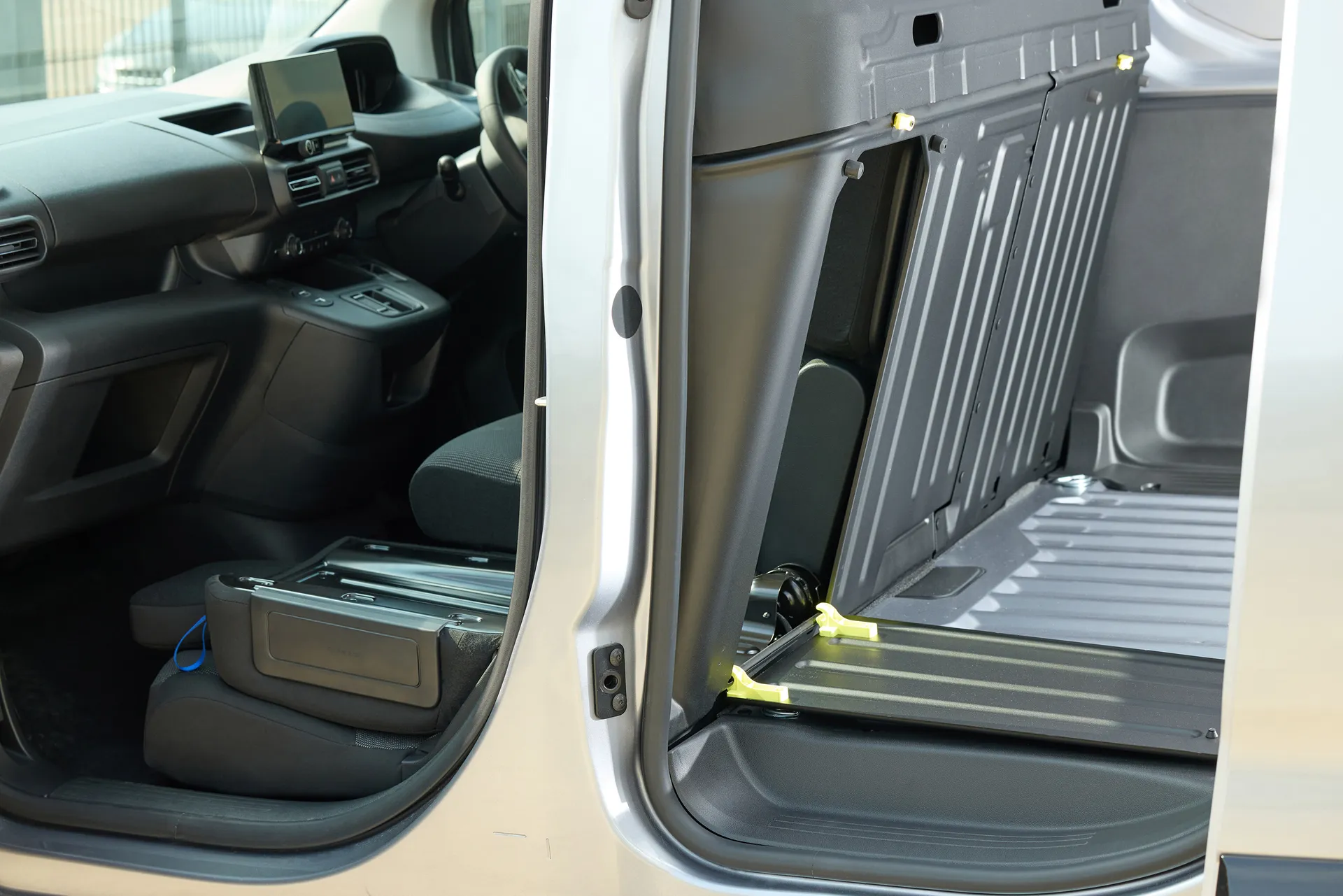
This is a feature that’s also found in the firm’s passenger cars. It essentially means that you get a small steering wheel, and instead of looking through it to see your driving instruments like you do in most vehicles, you peer over the top of it.
This will work fine for some, but some drivers will find that they have to position the wheel lower down than is comfortable to be able to see their instruments. There is lots of adjustment in the steering column and driver’s seats to give you a fighting chance of getting comfy, but some drivers will still feel awkward no matter what they do.
The rest of the cabin is less outlandish. Many functions - including the ventilation system - are controlled with physical switches and buttons on the dashboard. This is good news, as these controls are much easier and less distracting to use when driving than mucking about with a touchscreen.
Your visibility at the front is fine, but you don’t get much in the way of visibility at the back in basic models due to the bulkhead behind you, and that’s not helped a great deal by the relatively small door mirrors. At least rear parking sensors are standard.
Asphalt models, meanwhile, come with a digital rearview mirror that displays a live feed from a rear-facing camera, along with cameras and sensors down the sides of the vehicle.
Quality and finish
Most commercial vehicles don’t feel as posh inside as your average passenger car: that’s because they’re usually designed and built for durability, rather than tactility. It’s utterly acceptable, then, that most of the interior surfaces you find inside the Partner are made out of hard grey plastic. While these aren’t much of a treat for the eyes or the fingertips, they do feel extremely solid and hard-wearing, and feel totally appropriate in a vehicle like this.
We’re not entirely sure why, but combustion-engined models get a plastic floor lining in the cabin, while electric ones are carpeted.
Infotainment: Touchscreen, USB, nav and stereo in the Peugeot Partner
Entry-level Professional trim gets something called a Smartphone Station as standard. This is a mounting cradle - complete with two USB ports - for your smartphone on the dashboard, and Bluetooth connecting it to the two speakers. You also get audio controls on the steering wheel. However, DAB radio also comes as a no-cost option, so it’s an option that you might as well tick, but you must remember to tick it when you order, otherwise you won’t get it.
The Asphalt version, meanwhile, gets a touchscreen in the centre of the dashboard. In early examples, it was an 8.0-inch item, but in later Partners from after the 2024 facelift, the screen grew to ten inches. It comes with navigation, DAB, two extra tweeter speakers, Apple CarPlay and Android Auto. It’s certainly not the most sophisticated system of its type, but its simplicity makes it easier to navigate than many systems. There are a few strangely designed menus, but you'll get used to it with familiarity.
Asphalt versions also have a 10-inch digital instrument screen behind the steering wheel in place of the basic version’s traditional instrument dials. It looks good, but it isn’t any easier to use or any more informative than the regular setup.
Space and practicality: Peugeot Partner cargo space
The Partner is available in two lengths, imaginatively called Standard and Long. The Standard is around 4.4 metres in length, while the Long version is 350mm longer at 4.75 metres, 190mm of which sits in the wheelbase. The rest sits in the rear overhang.
In both versions, the width of the loadbay is identical at 1,229mm between wheelarches, meaning that there’s room for two Europallets. The height of the loadbay is 1,200mm in the L1 and 1,270mm in the L2. The loadbay length, meanwhile, is 1,817mm in the Standard and 2,167mm in Long.
If you can, however, get yourself a Partner with the load-through bulkhead fitted: it’s optional on the entry-level Professional version, and standard on the range-topping Asphalt version (it’s not available at all in the Crew Van version). This handy feature allows you to fold down the passenger seat and open up a large hatch through to the loadbay, extending your maximum load length to 3,090mm in the Standard van and 3,440mm in the Long. More critically, though, it also increases the maximum load capacity of your van: from 3.3 cubic metres to 3.8 cubic metres in the Standard, and from 3.9 cubic metres to 4.4 cubic metres in the Long.
The single-cab models have two front seats in base-level Professional trim, while higher-spec Asphalt models have a third ‘jump seat’ in between. The cabin has just about enough width for three people to squeeze in, but you’ll probably be getting a bit more up-close-and-personal with Big Gary than you’d have wanted to. On top of these versions, a Crew Cab version of the Long is also offered, with two seats up front, and a further three-seat rear bench behind.
This extra passenger space obviously comes at the expense of cargo space, and quite a lot of it. The width between the wheelarches is the same, while the load height stands at 1,243mm. However, with the rear seats in place, the load length is just 1,450mm and the load volume is just 1.8 cubic metres. With the rear seats folded, these figures increase to 2,000mm and 3.5 cubic metres, respectively.
In the case of the all-electric e-Partner, those all-important payload figures stand at between 759kg and 781kg on the Standard length van, and between 691kg to 709kg on the Long. The Crew Van’s figure is given at 642kg
The diesel versions can haul a little more: between 982kg and 984kg in the Standard, and between 927kg and 953kg in the Long, depending on your engine and the trim level. The Crew Van has a figure of 840kg, meanwhile. All examples have a Gross Vehicle Weight (GVW) of around 2.4 tonnes, give or take a few dozen kilos.
All versions of the Partner have twin doors at the back end for access to the loadbay, and for easier access, you can unhook the stoppers on the hinges, allowing these doors to open at up to 180 degrees. The Standard length van also has a sliding door on the left side of the van, while the Long gets sliding doors on both sides.
The Crew Van gets a plastic trim on the load floor, while the loadbay is bare metal in the others, or a wooden floor covering is available as an option. However, no version of the Partner gets illumination in the load area unless you pay extra for an option pack. We reckon that’s a bit mean.
Handling and ride quality: What is the Peugeot Partner like to drive?
"If you’re spending large chunks of your working day at the wheel of your van, then the driving characteristics you’ll care about above all else will be how comfortable and easy it is.”
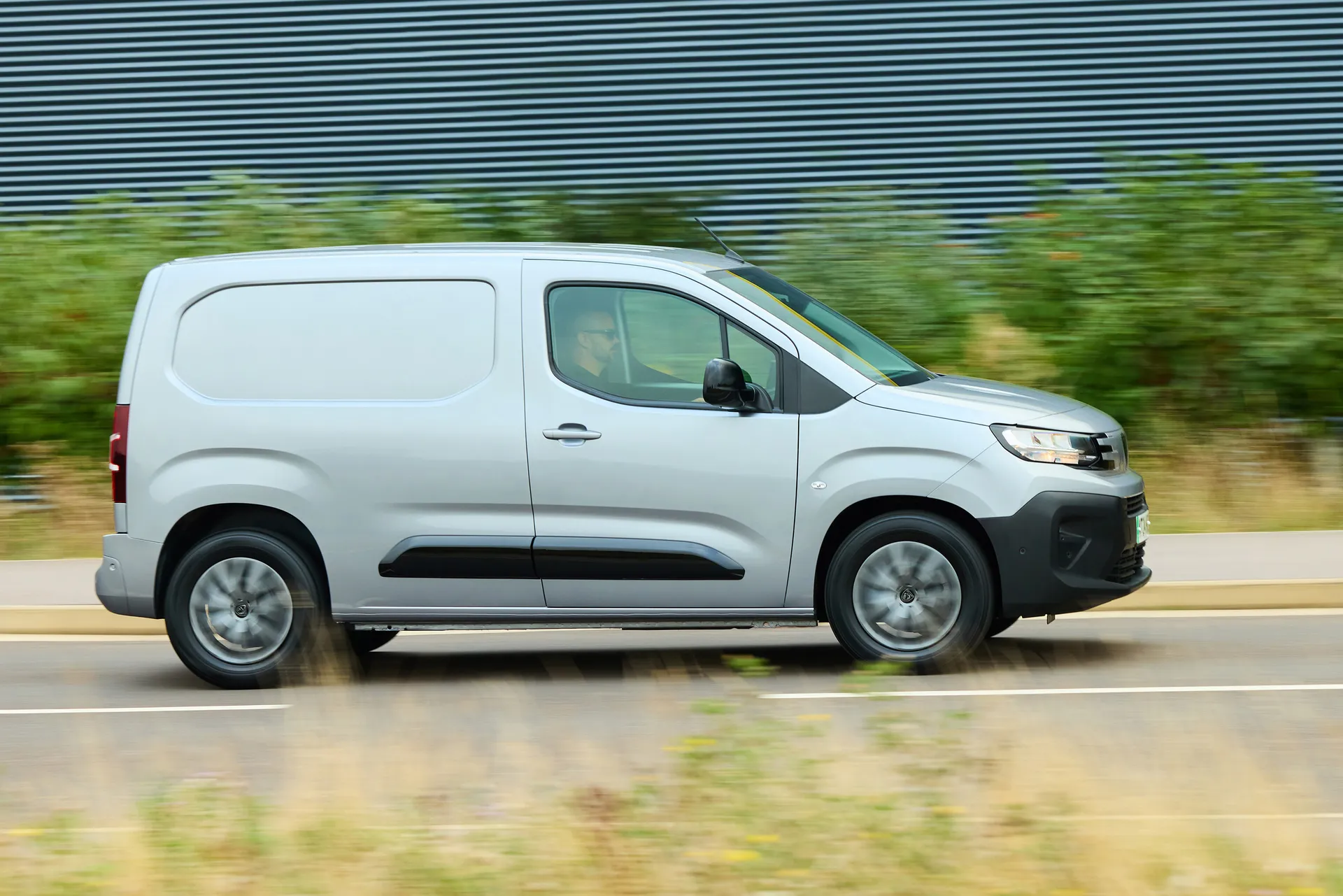
On that score, you shouldn’t have too much reason for complaint with the Partner. Okay, so the ride isn’t as settled as in your average passenger car - things can feel particularly jumpy when you have an empty loadbay - but it’s perfectly acceptable by the standards of other compact vans, and it very rarely gets to the point of being uncomfortable.
The handling is decent, too. There’s a fair amount of grip and decent body control, so it feels stable and safe on all types of road. The light steering isn’t the most accurate when plotting a course at speed, but that lightness is a big help when plodding through town, as is the tight turning circle.
Granted, rivals such as the Ford Transit Courier and VW Caddy Cargo are slightly more polished on the road, in terms of both ride and handling, but the Partner is good enough so as not to be completely outclassed
What engines and gearboxes/motors and batteries are available in the Peugeot Partner?
Early on in its life, the Partner was available with one petrol engine, a turbocharged 1.2-litre three-cylinder with 110PS, or four-cylinder diesels with 75PS, 100PS or 130PS. The earliest diesels were 1.6s, but these were very quickly replaced with 1.5-litre units of the same output.
These days, only the 100PS and 130PS diesels remain, along with an all-electric version. The 100PS engine comes with a six-speed manual gearbox, while the 130PS now comes exclusively with an eight-speed automatic.
Sure enough, the entry-level option is no fireball, but it’s strong enough to get you up to speed with reasonable ease: in a vehicle as dynamically limited as this, you probably wouldn’t want to go much faster, to be honest. However, you might face a bit more of an issue maintaining your speed. You need around 2,000rpm on the dial for the engine to find its strength, and if the revs dip below that - like they might on a steep incline or if you find yourself behind slower moving traffic in too high a gear - then you find yourself desperately short of go. You’ll need a downshift or two to regain your pace, and even then, building your pace back up again will take some time. This is the case even with an empty loadbay: load some heavy cargo, and it’ll get worse.
The 130PS version with the automatic transmission is the one most people will want if they can stretch to it, because it’s a sight more relaxed. Granted, it’s hardly any faster than the entry-level engine, because it doesn’t have a whole lot more get-up-and-go, and it still has that same flatness at low revs. The big difference is that the gearbox never allows the revs to drop below that 2,000rpm cutoff when you’re on the move, so you seldom find yourself in the doldrums, and although the transmission is constantly switching gears as you try to maintain your pace, or gain more, at least you’re not having to swap cogs for yourself.
You don’t have to shift gears in the electric version, either, but that’s because it only has one fixed-ratio gear, rather than an automatic gearbox. The e-Partner has a 136PS electric motor driving the front wheels, but you only get all of that power if you select the Sport driving mode: select Normal or Eco, and the power level that’s delivered becomes progressively lower.
You will detect the difference between the modes: there’s enough oomph in Eco mode to cope around town and at lower speeds, but once the surrounding traffic gets up to around 50mph or so, or you need more punch to exploit gaps in traffic, then you’ll want to engage one of the other modes.
Normal mode is brisk enough for most drivers in most situations: the performance is still decidedly leisurely, but you’ll squirt around quite happily without feeling like you’re getting in anyone’s way. Having a Sport mode feels a bit silly in a vehicle like the Partner, but its extra punch does come in handy when joining motorways or pulling away at busy junctions.
There are paddles behind the steering wheel that let you alter the e-Partner’s regenerative braking in three stages, harvesting energy that would otherwise be lost through deceleration and feeding it back into the battery. The lightest mode feels almost like you’re freewheeling when you lift off the accelerator, while the heaviest mode is almost strong enough to qualify as a one-pedal driving mode, although it doesn’t quite, because the car won’t come to a complete halt if you don’t operate the friction brakes. All the settings are easy to get used to, and to modulate.
Peugeot e-Partner range: How far can you travel on a charge?
When it first hit the market, the all-electric e-Partner had a 50kWh battery that gave it an official WLTP range figure of around 175 miles. That’s not great by the standards of many electric cars, but it’s about par for the course where electric vans are concerned.
However, the Partner’s 2024 facelift brought improvements to the electric powertrain, increasing the official range by 38 miles to 213 miles.
Refinement and noise levels
The electric version of the Partner is obviously very quiet in terms of its powertrain: you hear only a very faint whine when you first pull away, and that’s only if you have the window open.
Granted, that low level of noise makes the road- and wind noise you hear at higher speeds a little more noticeable, but neither is loud enough to annoy you. The suspension can make itself heard by clunking over bumps occasionally, and you’ll also hear the odd creak from the bodywork echoing around in the loadbay behind you. However, all of this is to be expected in a panel van.
Obviously, you hear more from the diesel engines than you do the electric motor, but most of the time, the clatter they make stays muted and distant. The engines have to be worked quite hard at times to maintain your pace, whereupon they become more vocal, but it rarely gets annoying.
Safety equipment: How safe is the Peugeot Partner?
Standard safety equipment in the Partner includes driver assistance features such as lane keep assist, high beam assist, intelligent speed limit assistance, automatic emergency braking, and driver attention alert. If you upgrade to the Asphalt trim, you also get blind spot detection.
The standard roster doesn’t include adaptive cruise control with stop and go traffic function, but there is an option pack that provides it, along with lane positioning assist. It’s only available on electric or automatic versions, though, and not on the Crew Van.
You get driver and passenger airbags, along with side airbags and curtain airbags in the front, and these should help to protect occupants in a crash. Buy yourself the Crew Van, though, and those in the back seats don’t get any airbag protection.
The passenger-carrying version of the Partner, the Peugeot Rifter, was crash-tested by Euro NCAP in 2018, earning four out of five stars. You’d expect a similar level of protection from the panel van version.
The Partner van has also achieved the Gold award in Euro NCAP’s commercial vehicle ratings: these ratings are more about the provision and effectiveness of driver assistance systems, rather than about crash safety. The Gold standard is the second-highest rating there is, behind Platinum, but in reality, those two standards have been achieved by all-but-one van that’s ever been assessed, making the feat a bit less impressive.
MPG and fuel costs: What does a Peugeot Partner cost to run?
"Your fuel costs will vary tremendously depending on whether you go for the diesel-powered Partner, or the all-electric version."
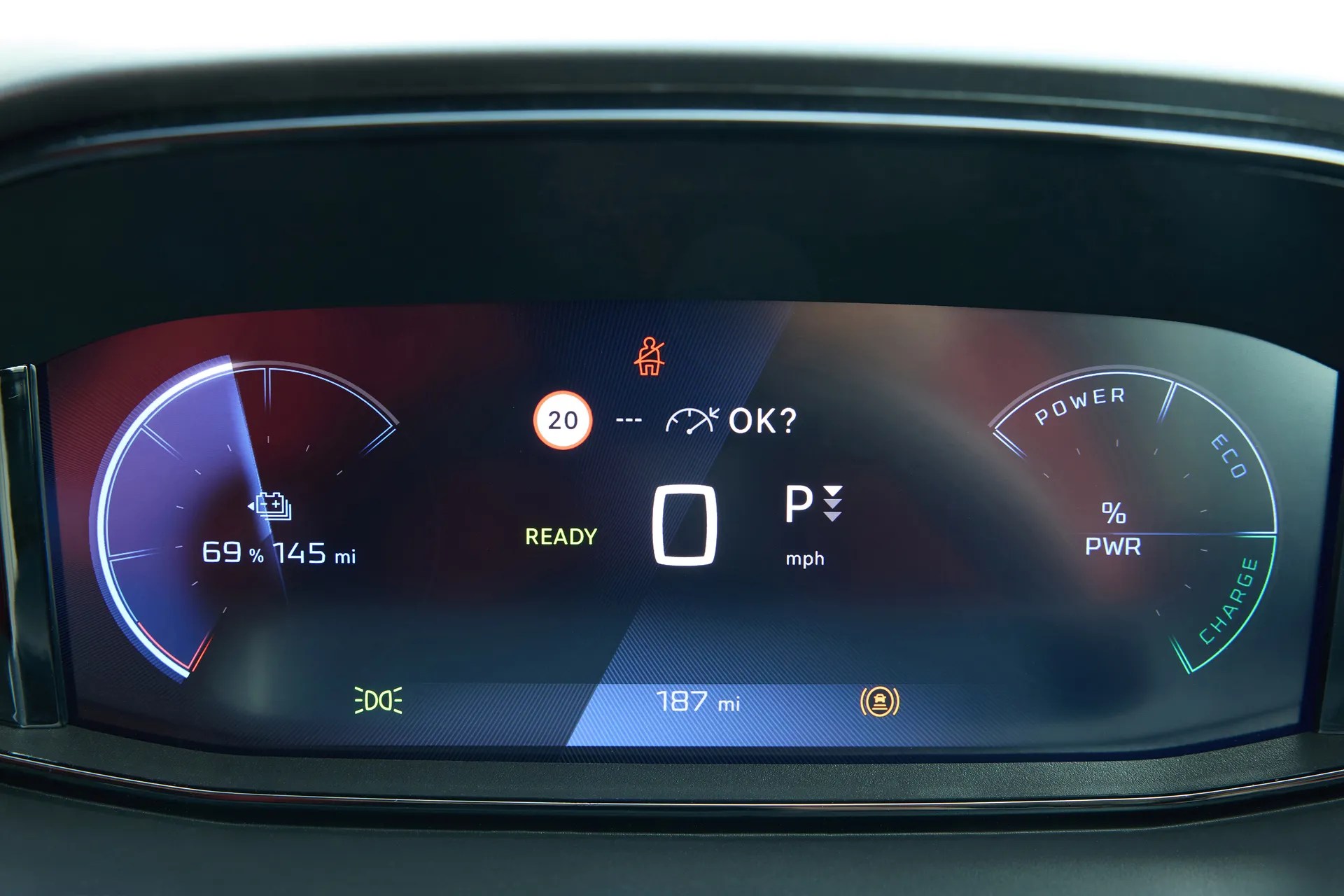
Go for a diesel, and the official WLTP fuel consumption figures say you’ll get up to 54.4mpg from the 100, or up to 51.9mpg on the 130. These laboratory-gleaned figures are always difficult to replicate in the real world, though, and you probably won’t do quite that well. Expect around 45mpg if you’re gentle, but less if your van is loaded up with heavy cargo.
Peugeot e-Partner charging times: How much does it cost to charge?
Plug your e-Partner into a three-pin domestic socket, and it’ll take upwards of 31 hours to take on a full charge. That’s part of why we wouldn’t recommend doing that on a regular basis. The other reasons are that you have to pay extra for the cable that allows you to do it, and that it’s not particularly good for your home’s electrics, either.
Do as most owners will, and charge at a dedicated 7.4kW wallbox home charger, and you’ll replenish your battery in around seven and a half hours. Either way, a home charge should cost you around £14, assuming that your domestic electricity is billed at the UK’s national average rate. Getting yourself on an EV-specific power tariff that allows you to charge overnight on heavily discounted off-peak power will save you much more: you can easily cut the cost of a charge in half.
The e-Partner has a maximum DC charging speed of 100kW, allowing you to take on a 0-80% charge in half an hour. That’ll cost way more than charging at home, though.
Peugeot Partner reliability and warranty
Our usual go-to source of reliability data - the HonestJohn.co.uk Satisfaction Index, put together by our sister website - isn’t of all that much use where the Peugeot Partner is concerned, because it only considers passenger cars, not commercial vehicles.
However, it is worth noting that Peugeot was named in the latest edition of the study as the second-least reliable manufacturer, out of the 29 carmakers considered. That might not fill you with confidence.
At least you get a half-decent warranty. There’s an unlimited-mileage manufacturer warranty for the first two years, and in the third year, you get a retailer warranty limited to 100,000 miles. The battery in electric versions, meanwhile, is covered for eight years or 100,000 miles.
Peugeot Partner insurance groups and costs
When it comes to insurance groupings, all versions of the Partner are much of a muchness. The cheapest version to insure is the Crew Van variant, sitting in group 28 (of 50, with 50 being the most expensive), a grouping shared with a couple of versions of the 100PS diesel. The other versions with that engine sit in group 29. Partners with the 130PS engine, meanwhile, sit in groups 30 or 31. All versions of the all-electric e-Partner are in group 29.
VED car tax: What is the annual road tax on a Peugeot Partner?
All light goods vehicles (LCVs) with combustion engines are taxed a flat rate of VED road tax, currently charged at £335 per year. If you choose to pay in instalments by direct debit, the total cost will rise to £350 over the year, while if you choose to pay every six months rather than annually, then you’ll pay a total of £370.
The e-Partner is currently exempt from VED being a zero-emissions electric vehicle. However, this won’t remain the case for long: the exemption for EVs will be lifted in April 2025, meaning you’ll be stung with the same tax bill as drivers of diesel-powered Partners.
Peugeot Partner price
"If you’re planning to procure your Partner brand new, then a diesel-powered version will cost you anywhere between £22,000 and £28,000 (excluding VAT), depending on spec."
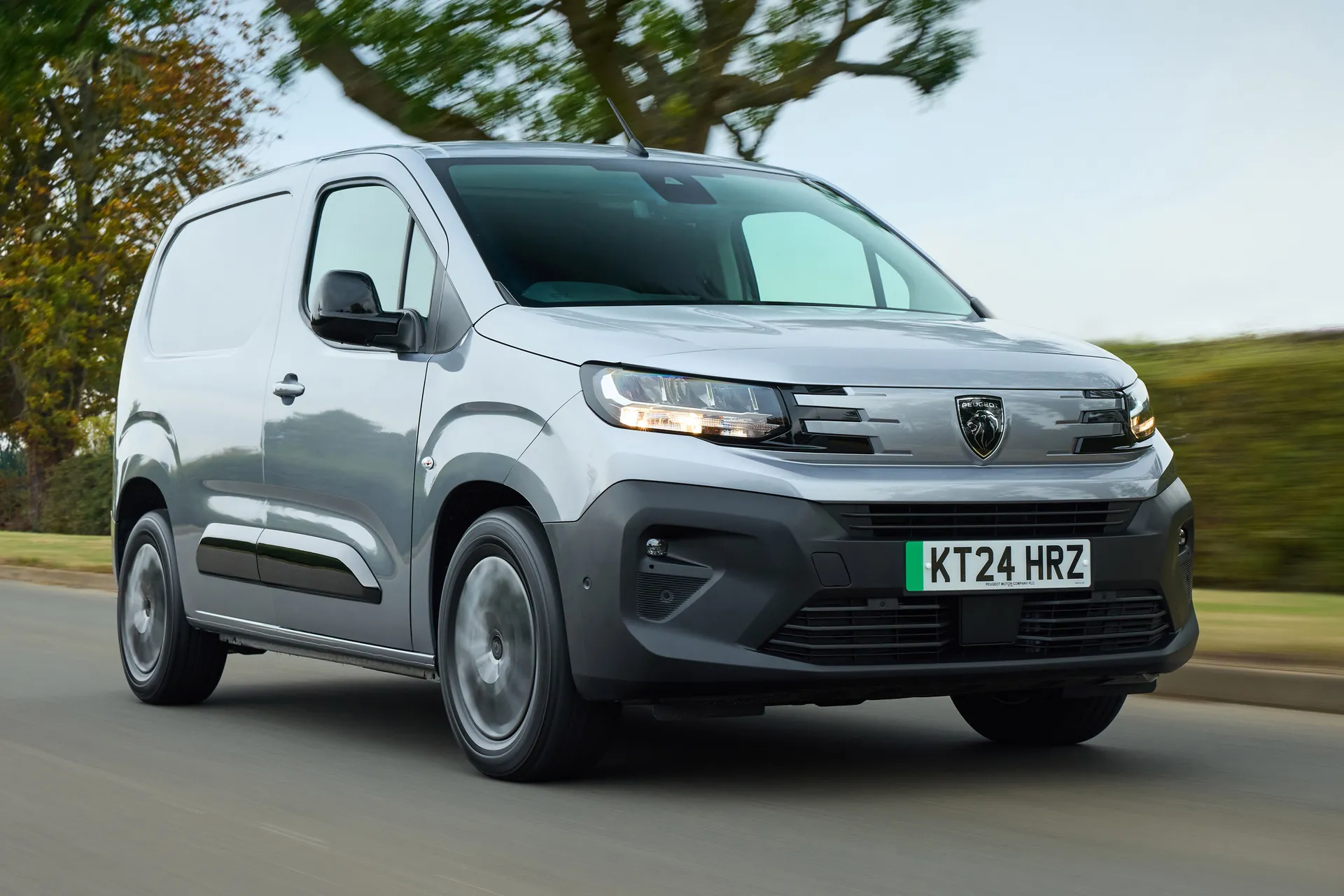
Go for the all-electric e-Partner and, assuming that you qualify for the Government’s Plug-in Van Grant, you’ll pay between £27,000 and £30,000.
If you’re willing to buy used, there are massive discounts to be had on the heycar classifieds. Just ten grand will give you your pick of entry-level diesel versions, and these are likely to be three or four years old with upwards of 50,000 miles on the clock. Twenty grand will get you an electric Partner, and this will likely be slightly newer and have less than 10,000 miles under its wheels.
Trim levels and standard equipment
The Partner is available in two trim levels. The basic version is called the Professional, while the higher-end version is known as the Asphalt. Earlier examples were available in a more-basic-still entry-level trim called S, and in a Grip version that had raised suspension and a more sophisticated electronic traction system to help negotiate building sites, but those two versions have now been discontinued, although the key content of the Grip is still available as an option pack.
The Professional’s standard roster includes a manual parking brake (although all electric versions get an electric parking brake), manual air conditioning, electric windows, electrically adjusting and heated door mirrors, remote locking, cruise control, rear parking sensors, and automatic headlights. The vehicle also looks rather basic, with door handles and bumpers in black plastic, and steel wheels with half hubcaps.
The Asphalt looks a little smarter thanks to full wheeltrims and body-coloured bumpers and door handles, not to mention LED headlamps. On top of that, you get an electric parking brake, rain-sensing wipers, power folding mirrors, an alarm, front parking sensors, the digital rearview mirror with rear- and side view cameras, the extra front seat, and the upgraded infotainment.
Ask the heycar experts: common questions
Is the Peugeot Partner a car or a van?
Is the Peugeot Partner any good?
What’s the difference between the Peugeot Partner, Citroen Berlingo, Vauxhall Combo and Fiat Doblo?
Get our latest advice, news and offers
Keep me updated by email with the latest advice, news and offers from heycar.
By submitting you agree to our privacy policy
